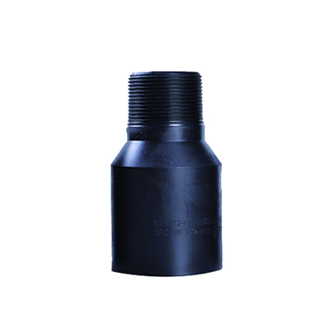- Afrikaans
- Albanian
- Amharic
- Arabic
- Armenian
- Azerbaijani
- Basque
- Belarusian
- Bengali
- Bosnian
- Bulgarian
- Catalan
- Cebuano
- Corsican
- Croatian
- Czech
- Danish
- Dutch
- English
- Esperanto
- Estonian
- Finnish
- French
- Frisian
- Galician
- Georgian
- German
- Greek
- Gujarati
- Haitian Creole
- hausa
- hawaiian
- Hebrew
- Hindi
- Miao
- Hungarian
- Icelandic
- igbo
- Indonesian
- irish
- Italian
- Japanese
- Javanese
- Kannada
- kazakh
- Khmer
- Rwandese
- Korean
- Kurdish
- Kyrgyz
- Lao
- Latin
- Latvian
- Lithuanian
- Luxembourgish
- Macedonian
- Malgashi
- Malay
- Malayalam
- Maltese
- Maori
- Marathi
- Mongolian
- Myanmar
- Nepali
- Norwegian
- Norwegian
- Occitan
- Pashto
- Persian
- Polish
- Portuguese
- Punjabi
- Romanian
- Russian
- Samoan
- Scottish Gaelic
- Serbian
- Sesotho
- Shona
- Sindhi
- Sinhala
- Slovak
- Slovenian
- Somali
- Spanish
- Sundanese
- Swahili
- Swedish
- Tagalog
- Tajik
- Tamil
- Tatar
- Telugu
- Thai
- Turkish
- Turkmen
- Ukrainian
- Urdu
- Uighur
- Uzbek
- Vietnamese
- Welsh
- Bantu
- Yiddish
- Yoruba
- Zulu
Innovative Technologies in Pipe Mill Production and Processing Efficiency
Exploring the Pipe Mill A Hub of Innovation and Efficiency
In the industrial landscape, the pipe mill stands out as a vital facility dedicated to the production of various types of pipes used in construction, engineering, and infrastructure projects. This specialized mill employs advanced technology and innovative processes to manufacture pipes that meet stringent quality standards, ultimately supporting the needs of numerous industries worldwide.
The primary function of a pipe mill is to produce pipes from steel, aluminum, and other metals
. These pipes come in various shapes, sizes, and specifications, catering to different applications, including oil and gas transportation, water supply systems, and structural applications in buildings and bridges. The process typically begins with the selection of raw materials, which are either sourced from external suppliers or produced in-house. High-quality steel coils or sheets are often chosen for their durability and resistance to corrosion.Once the raw materials are ready, the pipe manufacturing process commences. This usually involves several key steps, including cutting, heating, forming, welding, and finishing. Initially, the metal sheets are cut into manageable strips that can be easily handled and processed. The strips are then subjected to heating using induction or other heating methods, preparing the metal for the forming stage.
In the forming stage, the heated strips are rolled and shaped into cylindrical forms. This is achieved through a series of rolling mills that gradually bend the metal into the desired diameter. The precision of this process is critical, as it ensures the uniformity of the pipes being produced. Following the forming step, the edges of the pipe are welded together, creating a continuous seam. The welding is typically executed through techniques such as submerged arc welding or ERW (Electric Resistance Welding), ensuring that the joints are strong and reliable.
pipe mill

After the pipes are welded, they undergo a series of inspections and quality control measures. Non-destructive testing methods, such as ultrasonic or radiographic testing, are employed to detect any flaws or inconsistencies in the welds. Additionally, the pipes are often subject to hydrostatic testing, where they are filled with water and subjected to high pressure to ensure they can withstand operational demands.
Once the pipes pass all quality checks, they move on to the finishing stage, where they may be coated or treated to enhance their corrosion resistance and durability. Common treatments include galvanization and the application of protective coatings. The finished products are then cut to length, bundled, and prepared for delivery to customers.
The efficiency and productivity of modern pipe mills have significantly improved due to advancements in technology. Automation, computer-controlled machinery, and data analytics play crucial roles in streamlining operations, reducing waste, and enhancing product quality. Additionally, sustainable practices are becoming increasingly important in pipe mill operations, with many facilities adopting eco-friendly methods to minimize their environmental impact.
In conclusion, the pipe mill is a cornerstone of modern manufacturing, providing essential components for infrastructures that facilitate daily life and economic growth. By continuously evolving and adopting innovative technologies, pipe mills are set to remain pivotal in meeting the increasing global demand for reliable and high-quality piping solutions. As industries continue to expand, the role of pipe mills will undoubtedly become even more critical, underscoring the importance of this sector in our interconnected world.
-
Tubing Pup Joints: Essential Components for Oil and Gas OperationsNewsJul.10,2025
-
Pup Joints: Essential Components for Reliable Drilling OperationsNewsJul.10,2025
-
Pipe Couplings: Connecting Your World EfficientlyNewsJul.10,2025
-
Mastering Oilfield Operations with Quality Tubing and CasingNewsJul.10,2025
-
High-Quality Casing Couplings for Every NeedNewsJul.10,2025
-
Boost Your Drilling Efficiency with Premium Crossover Tools & Seating NipplesNewsJul.10,2025







